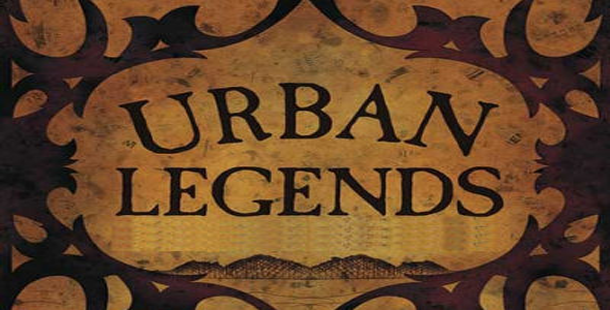Four Urban Legends for Your Halloween Fix
October 16, 2015
Ever since the beginning of mankind, humanity has been both fascinated and afraid of the unknown. One particular way mankind has dealt with this existential feeling of dread is by storytelling. Whether it’s for morality lessons or for fun, storytelling has evolved with the times. With the rise of technology in modern times, these stories now have wide exposure. What’s a better way to start off the Halloween season with a list of urban legends?
Cow Head
This urban legend from Japan concerns a scary story entitled “Cow Head” that causes people to die of fright. One story in particular involves an elementary school teacher telling the story to his students on their way to a field trip. Before he could finish his first sentence, an unknown entity takes over the teacher. When he comes to, he finds the bus he was on in the ditch and his students are in a catatonic state.
This “Cow Head” story apparently dates back to 17th century Japan. Japanese science fiction author Sakyo Komatsu wrote a short story based on the supposed story back in the 1960s. This gave rise to the now infamous urban legend.
The Black Volga
This urban legend from the Eastern Bloc first appeared during the 1960s and 1970s. Apparently, black Volga limousines were used to kidnap children in order to steal their blood for wealthy westerners and Arabs who are suffering from leukemia. More often than not, this urban legend overlapped with another one about KGB organ thieves. The drivers of these black Volgas ranged from nuns and priests to Satan himself.
Polybius
“Polybius” is a supposed arcade game that was published by the company Sinnesloschen (which is German for “sensory deprivation”). It was supposedly released sometime in 1981 in several arcades in the suburbs of Portland, Ore. According to the legend, unlucky patrons who were unfortunately played the game suffered from side effects such as amnesia and night terrors. There were reports of mysterious men in black who took notes of the psychoactive effects of the game. A month after its release, “Polybius” disappeared from the arcades altogether.
The first mention of this particular legend comes from a post on the coinop.org website on August 3, 1998 along with a supposed ROM image of the game. The urban legend gained widespread recognition in the September 2003 issue of GamePro magazine in a story entitled “Secrets and Lies”. Although there were reports of a Polybius machine found in a Newport, Oregon storage locker, the urban legend remains inconclusive by the general public. Noted skeptic Brian Dunning thinks that the “Polybius” rumor is a variation of an early 1980s urban legend about the supposed effects of an actual arcade game named “Tempest”.
Green Man
The Green Man, or Charlie No-Face, was an urban legend about a disfigured man who has glowing green skin who roamed the roads of Pennsylvania at night. Unlike the previous stories, this particular urban legend had some truth to it. The “Green Man” was a Pennsylvania man by the name of Raymond Robinson. When he was eight, Robinson was struck with over 20,000 volts of electricity while trying to get a better view of a bird’s nest on a trolley bridge. Despite all odds, Robinson survived despite losing his eyes, his nose, an ear and an arm in the accident. He went on to make a living making doormats, belts, and wallets. Despite being well liked by his family and neighbors, he couldn’t go in public during the day without causing a panic. He went out on walks during the night on a particular stretch of road. He would exchange conversations and photographs for beer and cigarettes. He died in 1985 at the age of 74.







